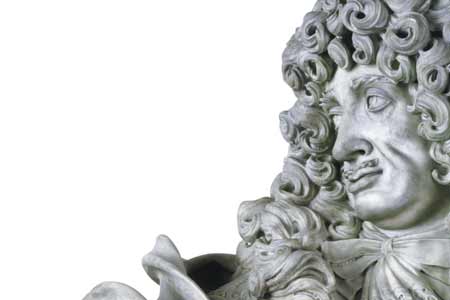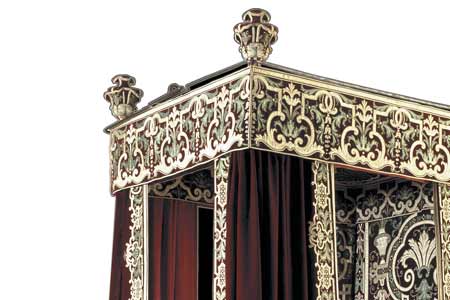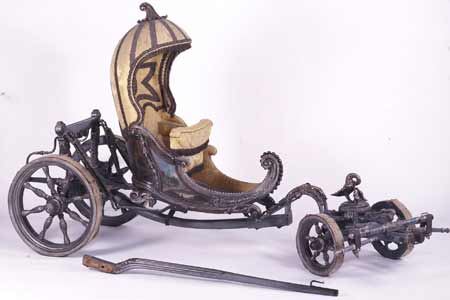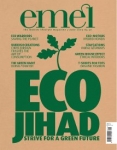
Baroque – Style in the Age of Magnificence
Issue 57 June 2009
Baroque – Style in the Age of Magnificence
Review by Mariam Mahir
Baroque, the trend-setting style of post renaissance Europe is presently being showcased at the Victoria and Albert museum in a grandiose exhibition. It chronicles a majestic era, from 1620 – 1800 CE; with a display of sculptures, paintings and furnishings under the Baroque umbrella.
Stemming from Italy and France, this opulent art form traced the steps of the first new world discoverers across the Atlantic to the Far East where it took on various personalities, tinged with local craftsmanship. Many international hands played a vital role in evolving the style; from Chinese craftsmen to Swedish artists, this extravagant art became the first ever global style.

Walking around the exhibition, one cannot ignore the sheer audacity of grandeur touching all artefacts heavily decorated with gold gilding, encrusted with precious stones and draped with the most exquisite silks. Art in all its forms played a vital role in the power of church and monarchy, bestowing it upon the public as well. Baroque became a creative approach favoured by the Roman Catholic Church to communicate their teachings through a highly emotive way aiming to appeal to all the senses, to seek affect in the heart, mind and most importantly the soul.

Faith and heroism are prominent themes running through the arts, conveying the higher authority of the State and the Church. The use of magnificent drapery, Greek mythological characters and cherubs all elevate the level of grandiosity. One prime example is the Sleigh with a Figure of Diana (1710).
Art was not viewed for its own sake at the time; it was a creative weapon used against rival European states. Nations attempted to out-do each other with elaborate stately processions, theatrical spectacles with extraordinary special effects played against a backdrop of a perspective of never ending colonnades and painted ceilings of heavenly scenes, suggesting the ascension to the heavens and God.
In terms of the architecture, painted domes, colossal masses and gilded interiors emerged as the rigid rules of Greek and Roman architecture were broken to set free innovative designs of fluidity and romanticism. The Baldacchino twisted and curved columns were born and Bernini’s masterpieces were created. Famous examples include Bernini’s Santa Maria Della Vitoria in Rome, the chateau in Versailles and Place VendÔme in Paris to name a few.
One major drawback is that the most representational works of this lavish era are monumental buildings, sculptures and religious institutions spread all around Europe, hence the exhibition weakly relies on video footage displays, art pieces of less relevance and replicas of originals such as a version of Louis XIV’s portrait by Hyacinthe Rigaud. Nevertheless, it is worthwhile to see a child’s quaint garden chariot from Versailles and the highly emotive The Virgin of Sorrow’s altarpiece.
Faith and religious imagery flow throughout the exhibition; its purpose was to bring spiritual improvement in the individual. So, from household religious motifs that were both functional and highly ornamental, some focusing on esoteric theories, others more mundane, religion enveloped everything.
Imagery representing the triumph over evil is widespread; one piece on display, The Grand Chandelier, portrays the journey from darkness to light and from damnation to salvation. The Roman Papacy ensured that religion and piety were represented in all aspects of life. High mass, for instance, was a compelling, multi-sensory experience. With a lavish setting, pungent incense and virtuoso music, captivated worshippers reached euphoric heights.
This excessive extravagance and pomposity contrasted with the simplistic essence of faith. It aimed to nurture hope of salvation; instead it promoted a desire for worldly pleasures. This irony leads me to consider that Baroque was a gold-gilded representation of Catholicism at the time, putting the Papacy and State on a high moral pedestal or should I say a Bernini colonnade adorned with cherubs and grapevines.
Baroque is without a doubt not for the faint hearted. Those who believe less is more should not step over the threshold as you will perceive it as gaudy chintz fit for the nouveau riche sentimentality. All that glitters is not gold, after all. Nevertheless, from a historical and cultural standpoint, Baroque encapsulates a rich era of art, culture and religion that has left an ornate impression on the world to this day and ought to be celebrated, but by no means through the elated raptures favoured by the time.
Baroque 1620-1800:
Style in the Age of Magnificence (Victoria and Albert Museum)
4 April - 19 July 2009
Bookmark this |
|
Add to DIGG |
|
Add to del.icio.us |
|
Stumble this |
|
Share on Facebook |
|
Share this |
|
Send to a Friend |
|
Link to this |
|
Printer Friendly |
|
Print in plain text |
|


Comments
0 Comments